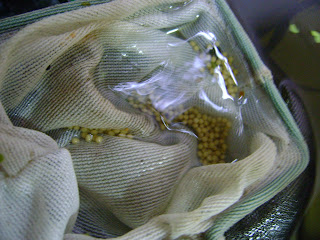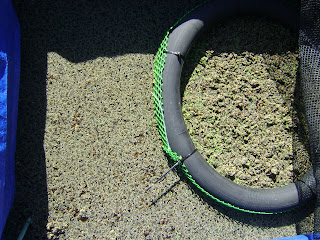Curiosity is the mother of discovery, and for me it is also the mother of all teacher.
I was so curious how tilapia eggs would look like and would it be possible to have fish by incubating them outside the mothers mouth. The picture below shows how the eggs would look like when they are fertilized, they look yellowish, pale and white eggs are either unfertilized or dead. And other than curiosity, I wanted to learn to produce tilapia in a little bigger scale an indoor fish farm and vegetable garden.
During this time of my R&D, my skills and instruments are all lacking. I wasn't able to turn these eggs into fry. Googling showed me the way to, apparently one needs an egg tumbler that mimics the activity inside the mother tilapia's mouth during incubation period.
Another reason that caused the death of these eggs was the circulation of the water, it must be well oxygenated from an air pump or air compressor. Just like the mothers mouth, oxygenated water comes from her gills. Third reason is contamination, once there is no water circulation fungus can thrive, white fungus will develop around the eggs and infect them and eventually dies.
Using my imagination and creativity plus ingenuity, I created my own egg tumbler. After watching a few videos on youtube, I went to my stockpile of unused parts. A pvc adapter, a plastic screen and an acrylic tube that came with my siphon pump.
It was an amazing experience watching these dudes that look like little Nemos, taking care of them until they are ready on the real world. The picture below are fry with yolk sacks still on.
And finally swim up fry are cared and nurtured into advance fry. Feeding these dudes are laborious a 100% body weight ratio to their feeds and 10x a day feeding rate. I used the Tateh feeding guide that can be found by googling Tateh feeding guide.
The picture below are advance fry in close up. When they rich a length of 1 inch they are ready for transfer in the bigger fish tank for rearing or fattening.





































